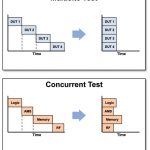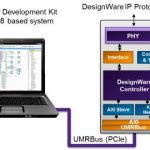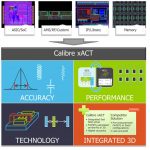Every SoC project that I know of wants to finish on time, under budget, and maximize profits per device. When I first started out doing DRAM design I learned that we could maximize profit by doing shrinks of existing designs, move from ceramic to plastic packages, and reduce the amount of time spent on a tester. Today, the economic … Read More
Electronic Design Automation
Beware of Parameter Variability in Clock Domain Crossings
How should we assess the risk of harmful metastability in a clock domain crossing (CDC) when the semiconductor process has significant parameter variability? One possibility is to determine the MTBF of a synchronizer at the worst-case corner of the CDC. But that approach has some conflicting complications:
- Synchronizer failures
ARM A57 (A53) Virtualizer + IP Accelerated = ?
Hybrid IP Prototyping Kit from Synopsys!
Synopsys has launched IP Accelerated initiative last year. The goal was clearly to accelerate Time-To-Market by providing a complete set of “tools” to augment design productivity:
- IP Prototyping Kit with reference designs work out-of-the-box
- IP software development kits enable early
Experts Talk at Mentor Booth
It’s less than four weeks to go at DAC 2015 and the program is final now. So I started investigating new technologies, trends, methodologies, and tools that will be unveiled and discussed in this DAC. In the hindsight of the semiconductor industry over the last year, I see 14nm technologies in the realization stage and 10nm beckoning… Read More
Breaking the SoC lab walls
There used to be this thing called the “computer lab”, with glowing rows of terminals connected to a mainframe or minicomputer. Computers required a lot of care and feeding, with massive cooling and power requirements. Microprocessors and personal computers appeared in the 1970s, with much smaller and less expensive machines… Read More
End of the Road for Micrel
Micrel Inc., one of the oldest chipmakers in Silicon Valley, has been acquired by Chandler, Arizona–based Microchip Technology Inc. for $839 million. A pure-play analog chip house will go to one of the leading microcontroller suppliers after regulatory approval amid the consolidation wave that has engulfed the semiconductor… Read More
SoCs in New Context Look beyond PPA – Part2
In the first part of this article, I talked about some of the key business aspects along with some technical aspects like system performance, functionality, and IP integration that drive the architecture of an SoC for its best optimization and realization in an economic sense. In this part, let’s dive into some more aspects that… Read More
Feed Your Mind and Body at 52nd DAC!
My beautiful wife and I attend the Design Automation Conference together whenever possible. More so now that she is the co-founder and CFO of SemiWiki. It is really nice for her to put a face to the invoices and personally thank our subscribers. Her first DAC was 1985 in Las Vegas. We were married for less than a year so it was like a second… Read More
Chip Design Problems Remain the Same, More or Less
For those who may not know me, here is a brief introduction. I started in the semiconductor business when RCA was still making vacuum tubes and I wrote EDA software before there was an EDA industry. I’ve designed and sold chips and developed, sold and used EDA tools at companies as big as General Electric and as small as seven people.… Read More
Calibre xACT Shakes Up 16nm and Below Extraction Game
Mentor Graphics made a big announcement regarding SOC extraction at their User2User conference in San Jose during April. Before I get to the meat of the announcement, I’d like to reflect back on the early days of Calibre-DRC at Mentor. I was in Sales at Mentor around 1999, and Calibre-DRC was the new kid on the block. We had to go convince… Read More







Quantum Computing Technologies and Challenges